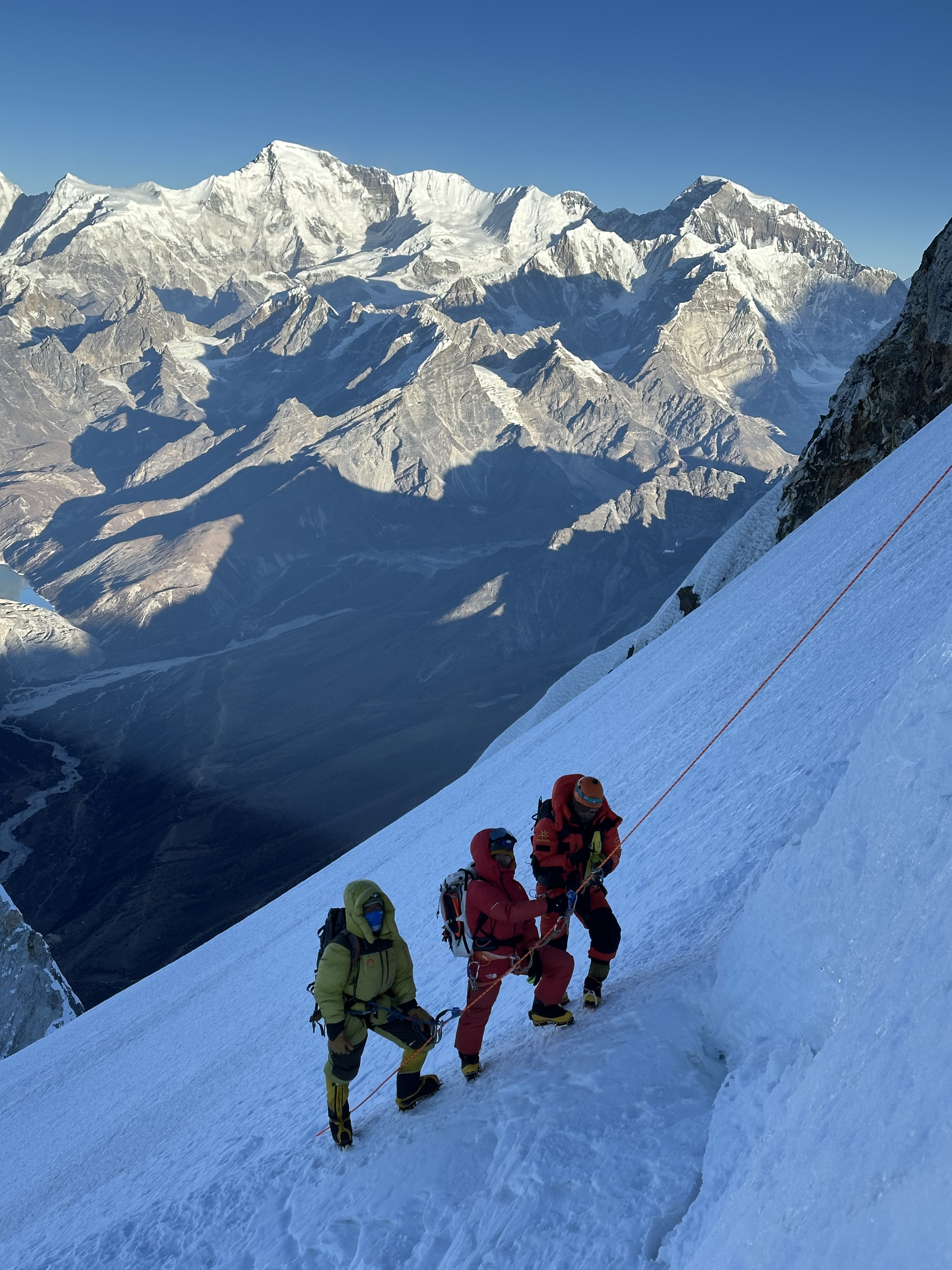Trip Highlights:
-
Climb Island Peak (6,189m), one of Nepal’s most iconic and accessible Himalayan trekking peaks.
-
Experience a guided alpine ascent featuring glacier travel, ladder crossings, fixed ropes, and a narrow summit ridge.
-
Take in breathtaking views of Lhotse Shar, Makalu, Baruntse, and Ama Dablam , and surrounding giants from the summit.
-
Follow the classic Everest trail through Namche Bazaar, Tengboche, Dingboche, and Chhukung before reaching Base Camp best suitable with EBC Trek.
-
Train and climb under the leadership of Kami Rita Sherpa, world record holder for the most Everest ascents.
-
Small-group expedition with full climbing support, acclimatization stops, and a safety-first approach.
-
Immerse yourself in Sherpa hospitality, culture, and high-altitude landscapes of the Khumbu Valley.
Trip Facts:
-
Location: Khumbu Region, Nepal
-
Highest Point: Island Peak Summit (6,189m)
-
Duration: 17 days
-
Group Size: 1–10 individuals per group
-
Trip Grade: Moderate to Alpine Climbing
-
Accommodation: Teahouses & Tented Base Camp
-
Meal Plan: Breakfast, Lunch & Dinner during trek and climb
-
Transportation: Flights to/from Lukla, Private Vehicles in Kathmandu
-
Best Season: Spring (April–May) & Autumn (September–November)
-
Major Activity: Technical Peak Climbing & Cultural Trekking
-
Culture & Ethnicity: Sherpa communities and Tibetan Buddhist heritage
Overview of the Island Peak Climb
Island Peak (also known as Imja Tse) rises prominently above the Chhukung Valley in the Everest region and is one of Nepal’s most frequently climbed trekking peaks. First summited in 1953 by members of the British Everest expedition team, including Tenzing Norgay, Island Peak has become a favorite for climbers aiming to experience a true Himalayan summit while preparing for higher peaks like Ama Dablam, Manaslu, or even Everest.
The journey begins with a thrilling flight to Lukla, followed by a trek through vibrant Sherpa villages and alpine landscapes. After proper acclimatization at Namche Bazaar, Dingboche, and Chhukung, the route diverts to Island Peak Base Camp, where climbers undergo final training and preparation.
The summit push involves glacial travel, steep ice slopes, and fixed rope ascents—all leading to a narrow summit ridge with jaw-dropping views of the eastern Himalayas. With expert guidance from Kami Rita Sherpa and his team, climbers are supported every step of the way for a safe, successful, and unforgettable summit.
Best Season to Climb Island Peak
Spring (April–May) and Autumn (September–November) are the most favorable times to climb Island Peak. These seasons offer optimal weather, clearer skies, and safer glacier conditions.
-
Spring: Warmer days, less wind, and blooming rhododendrons along the trail.
-
Autumn: Cold, crisp mornings with excellent mountain visibility—ideal for summit success.
Winter (Dec–Feb) can be attempted but includes extreme cold and unpredictable conditions. The monsoon season (June–August) is not recommended due to rainfall and trail disruptions.
Training and Preparation
Though Island Peak is considered a “trekking peak,” it includes technical sections and high-altitude exposure. Preparation is key:
-
Physical Training: Emphasize cardio, stair/hill workouts with a loaded backpack, and core strength.
-
Technical Readiness: Experience with crampons, harnesses, ice axes, and fixed ropes is beneficial. Training is provided on the mountain.
-
Mental Preparation: Flexibility, patience, and determination are essential to handle weather delays and altitude.
-
Gear & Equipment: Bring proper alpine gear, including double mountaineering boots, a certified climbing harness, down clothing, and glacier eyewear.

